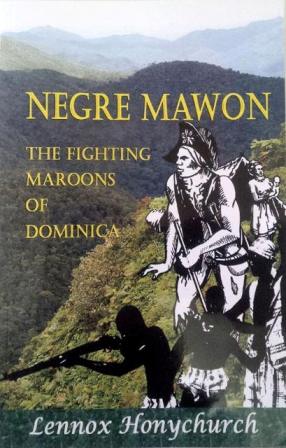 Over 500 years ago, when the European explorers first made the long and arduous journey across the Atlantic, they brought with them a surge of changes that would shape the course of Caribbean history. This part of the story is familiar: The Caribbean islands were brutally stripped of their native people, their lands cleared and planted with cash crops such as Sugar Cane, and the enslaved Africans seized from their homeland to live in harsh conditions and forced into labor. But in Lennox Honychurch’s Negre Mawon, the Fighting Maroons, we learn of a different, unfamiliar story, which takes place on our small island of Dominica.
Over 500 years ago, when the European explorers first made the long and arduous journey across the Atlantic, they brought with them a surge of changes that would shape the course of Caribbean history. This part of the story is familiar: The Caribbean islands were brutally stripped of their native people, their lands cleared and planted with cash crops such as Sugar Cane, and the enslaved Africans seized from their homeland to live in harsh conditions and forced into labor. But in Lennox Honychurch’s Negre Mawon, the Fighting Maroons, we learn of a different, unfamiliar story, which takes place on our small island of Dominica.
Dominica became the last island in the Caribbean to be colonized. Unlike her neighbors, Dominica’s terrain worked in her favor. With the world’s highest concentration of dormant volcanoes, packed into a 754 sqkm sea of mountains, such an incredible landscape worked to the advantage of the Kalinago people who fiercely defended her. This influenced the island’s neutral status for many years, and was instead used as a stopping off and trading point for ships travelling to and from the Caribbean.
For those fortunate to escape here, Dominica became home to a number of escaped slaves or ‘Maroons’ many years before the island was officially settled by the European powers. Referred to as the “Negre Mawon”, these Maroons molded Dominica’s path in history and greatly impacted the European settlers who eventually claimed the island for themselves. It is said that “Dominica displays not so much the effects of a Plantation Society but that of a Maroon Society”.
In Negre Mawon, The fighting Maroons of Dominica, readers are carried through a timescape of Dominica’s unique and turbulent history. This is not just an account of the worst reaches of human nature but also of the remarkable strength and will power of survival.
